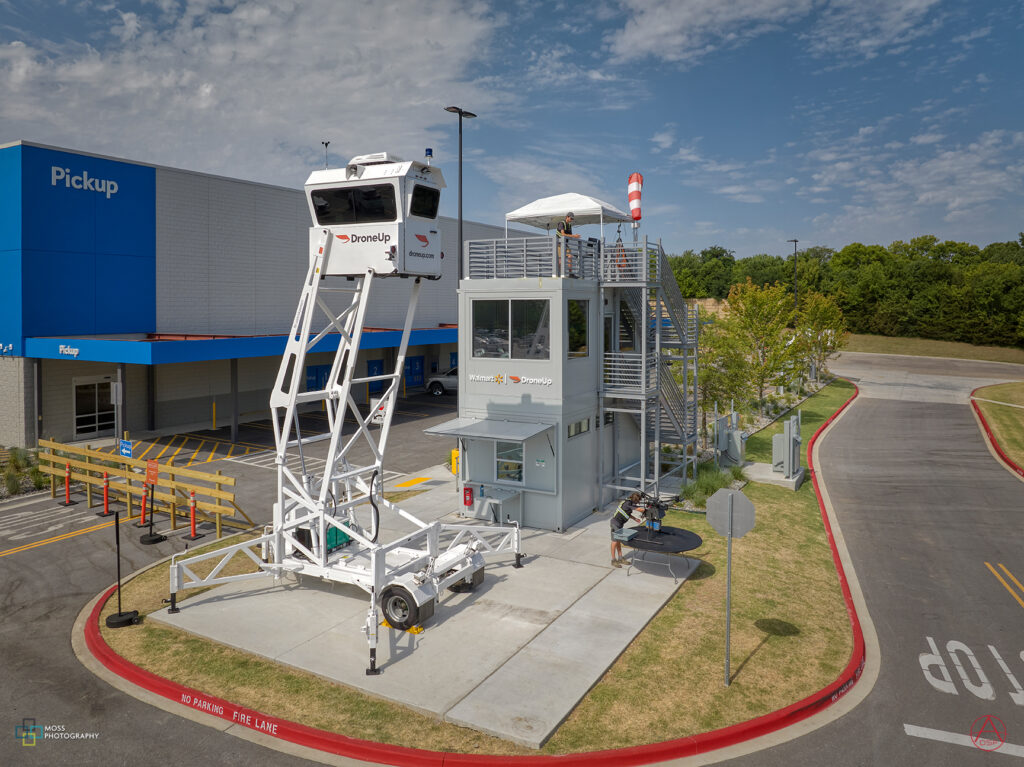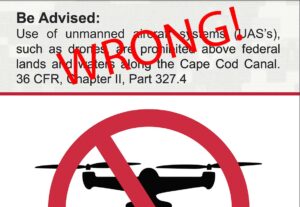As I mentioned in yesterday’s article about Day 2 of the Symposium/Summit, I’m just not that familiar with the intricacies of Advanced Air Mobility (AAM). And I wasn’t sure what I was going to write about for the final day of the conference.
So below is sort of a rambling set of observations and kernels of knowledge I picked up. Hopefully that will help some of our readers understand a bit more about AAM. If you’re like me, you’ve never really spent much time diving into the AAM sphere. Maybe this will help. It won’t provide very many answers, but at least you’ll have an idea of the obstacles and input needed by the FAA to get AAM moving forward. I was going to say “get AAM off the ground”. Aren’t you glad I didn’t?
We many of us hear “AAM”, we think of The Jetsons, and maybe Walmart or Amazon Deliveries. I know that’s pretty much what I did.

Until yesterday…
The world of AAM is actually pretty interesting. Even if you’re not a Policy Wonk like me. And a shoutout to Jon McBride for coming up with that title for me and Kenji a few years ago. AAM is a lot more than just The Jetsons. Actually, it’s nothing like The Jetsons.
Yes AAM is about Air Taxis and Delivery Drones, but it also about the infrastructure to support all of that. It’s also about standards. It’s about the electrification of aviation. And it’s about acceptance. It’s actually about more than “acceptance”. As one panelist put it, “We accept paying taxes, that doesn’t mean we like it.” We need to move beyond acceptance, and actually get the public to buy into it. Whether that’s financial or ecological buy in stakeholders and the general public, without either, AAM is doomed from the start.
It’s also about equity. This industry cannot move forward if it’s perceived as for the well-off communities only.
AAM has the (deserved?) illusion of being just a “rich person’s toy”. And with that illusion, not many everyday folks will give the industry that buy-in, and even fewer state and local politicians will.
Yes, I have no doubt the “rich” will have plenty of these. But that doesn’t mean it won’t be useful to the rest of us. When automobiles first came out, they were basically only for the rich. That is obviously no longer the case. And while we may not all be driving around in Mercedes and Porsches, we don’t really need to in order to consider automobiles a necessity.
We use our vehicles for driving to work, picking up groceries or Pizza Hut, or whether just general fun either driving around with the top down or off-roading if your vehicle has that capability. And what about motorcycles? Wouldn’t the Star Wars Pod Racers really just be cool futuristic motorcycles? Those pod racers would certainly fall under the AAM umbrella.
And of course we need to talk about drone deliveries? Yes, eventually we’ll be able to get that Tuna Helper delivered if we don’t feel like jumping in our own vehicles and driving to the Piggly Wiggly. But we’ll also be able to get medicine out to rural communities much faster and more ecologically than putting it on a truck or in a car. And we’re not just talking small deliveries here.

I live in Colorado, and if you live on the Eastern Plains there are many times when it’s tough to get someone to medical care when there’s an emergency. No state or hospital system has the funds to equip every expansive and rural county with a medical helicopter? How much more of a likely option would that be if that emergency aviation vehicle costs 10% (or less) of something like an Airbus H125. At over $2M USD each, not to mention maintenance and operating expenses, that puts reliable and ready air ambulance services out of reach in many rural communities.
Supposed that could be done for 25% or even 10% of those costs?
Sounds awesome.
But don’t sign up for all of that yet.
Call me old fashion (I do belong to the Facebook group “Old Farts With Drones”), but I just don’t see this being as wide spread as many seem to believe it will be.
There are some AAM companies doing awesome work. And there are some AAM companies that may only look good on paper. It’s way too early in the process to see just how widespread this actually becomes.
I hope I’m wrong, honestly. One industry leader even mentioned that it seems like the AAM industry is about where the small UAS industry was in 2014. Lot’s of talk… lot’s of excitement… in regulatory limbo… and not a lot of birds in the air.
The FAA has a fairly aggressive timeline for certifications and such for AAM. 2028 seems to be their benchmark. Industry seems to be a bit more aggressive. They’d like this to be in full testing in 3 years.
Which bring us back to infrastructure. And eventually we need to talk about workforce development.
The vast majority of AAM UAS being designed and tested now are powered by electricity. We have the battery technology, and we have the designs for the vehicles. But where to we land them? Where do the charge? Do we need full airports (Vertiports)? Can we use existing infrastructure? Where does the electricity come from, and is it renewable? And who’s going to pay for all of this?
And how about FAA certification of the people involved? Or even certification of the FAA employees who need to make sure those newly certificated AAM workers follow their certification processes and regulations? It’s almost a Chicken/Egg situation.
And did you know that different AAM manufacturers use different plugs to charge their batteries? There can’t really be any deep planning on infrastructure until a number of these issues are settled. Obviously the plug design will be standardized in plenty of time, but it is just one of the many small and large pieces of the puzzle that need to fit together.
By the way, underlying all of these issues is the core tenet of the FAA: Safety.
Even when all of these issues are resolved, if the fail safety, they’re pointless. And AAM is dead in the water.
Now don’t get me wrong, there are a lot of very smart people in both the FAA and in Private Industry that are working hard on finding these answers. We heard from a lot of them this week. And many in Private Industry have aircraft ready to go when they get the green light. Some even had theirs at EEA AirVenture in Oshkosh last week. This industry is raring to go.
But they are still looking for many of those answers and legal pathways (& infrastructure, & workforce, etc).
There is currently a multi-agency committee working on many of the standards that will be necessary to accelerate the path of full-fledged and scalable AAM operations. That will help. It’s being chaired by the DOT, and has a multitude of other alphabet agencies ranging from the FAA, to the DOJ, to the DOE (Energy) involved. There is lots of brain power sitting in that room during meetings. But even their report won’t be ready until Q4 of this year, or Q1 of next year.
So as I said at the beginning, not a lot of answers in this article. But I think there are some going points that were brought up during sessions at the last day of the conference. I know I came away with a better idea of just all that is still needed for AAM to be a success. And I know that there are people working on the necessary answers, and that overall the industry seems to be very positive about where they’re going. Or at least where they’ll be able to go once the standards are solidified.
I can say that if your state or locality isn’t looking to the future and trying to figure out just how AAM will benefit their citizens, you should probably reach out to them and see if you can light a fire under them.
As Jeffrey Vincent said at the AAM lunch kickoff on Wednesday, “We need to be ready to capitalize [on AAM] when it is ready”.
If you’re wanting to get more information about AAM and it’s future, I found a fun little website while researching a bit more for this article. It’s called (appropriately enough) AAM Reality Index (https://aamrealityindex.com/). I haven’t spent a ton of time there yet, but I have a funny feeling I’ll be referencing their articles in the near future as I educate myself about AAM and it’s impact on our Drone Service Provider industry.
___________________________________________________________________________________________
Drone Service Providers Alliance provides “Professional advocacy for Drone Service Providers throughout the United States”. Our mission statement is “A United Voice for Positive Change”. We are a dues supported 501(c)(6) organization. Dues are used to cover travel and operating expenses. No salaries are taken by Kenji and Vic for the work they do on behalf of the US UAS industry. We fully believe a rising tide lifts all boats. And since we also fly drones for a living, it will benefit us as well.
If you believe in what we do, please consider joining us, we appreciate any and all support: https://dspalliance.org/join-us/
Also, have you added to your drone fleet? Do you know the ins and outs of your new drone? Check out Pilot Institute’s Deep Dive Videos. Greg and crew do an great job helping you understand your drone better. And each and every Deep Dive Video is free.
Also, if you don’t have your 107 yet, or are looking to add UAS Verticals, check out the Pilot Institute site for additional classes. They have business classes, a VO class (pay for your VOs to take it), mapping, photography, and more. Check out their offerings here!
Need a new drone? Need to rent one for a specific job? Need some repair work done? Blue Sky Drones is your answer to all of these questions.
And as always FLY SAFE!



